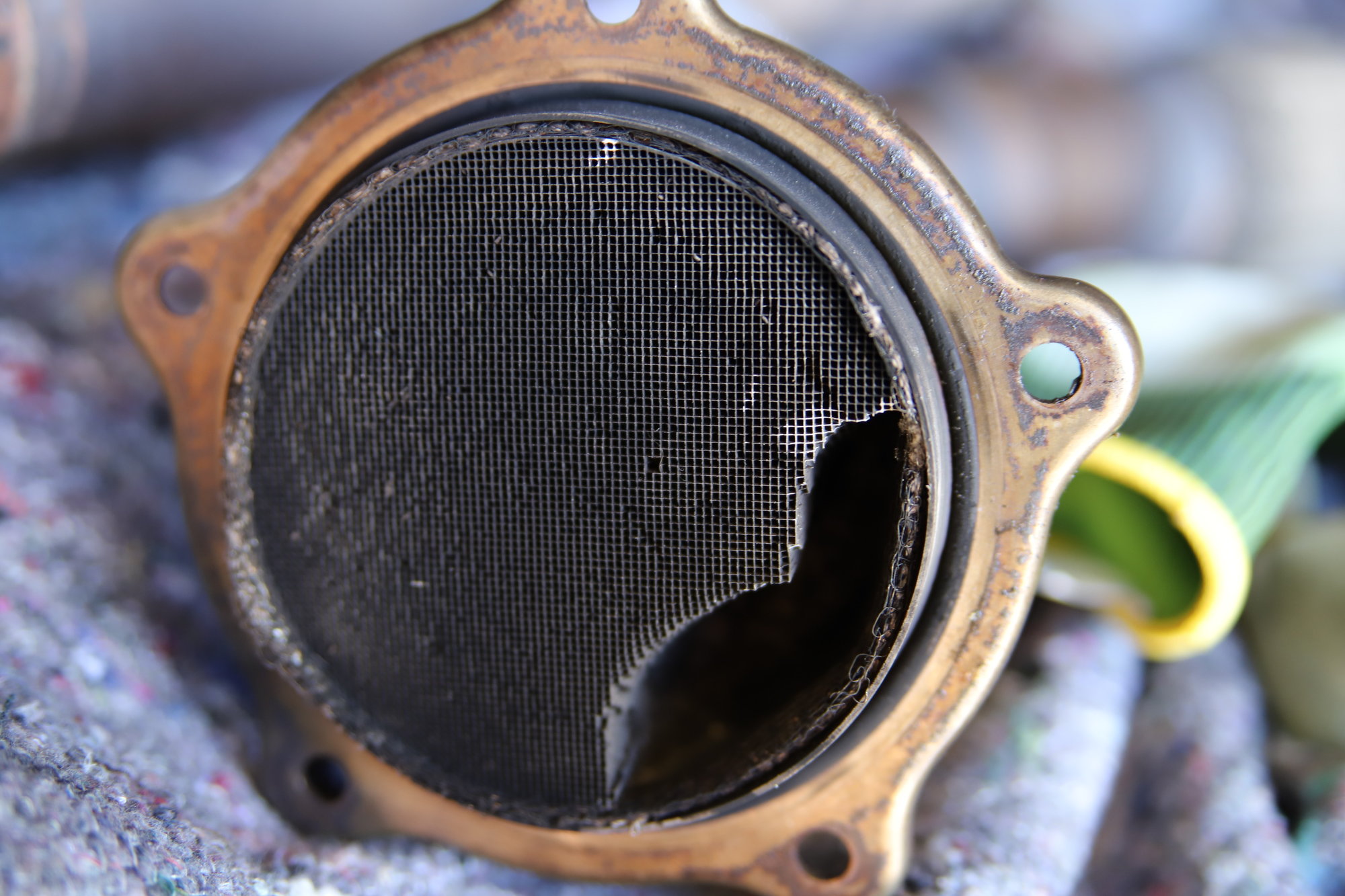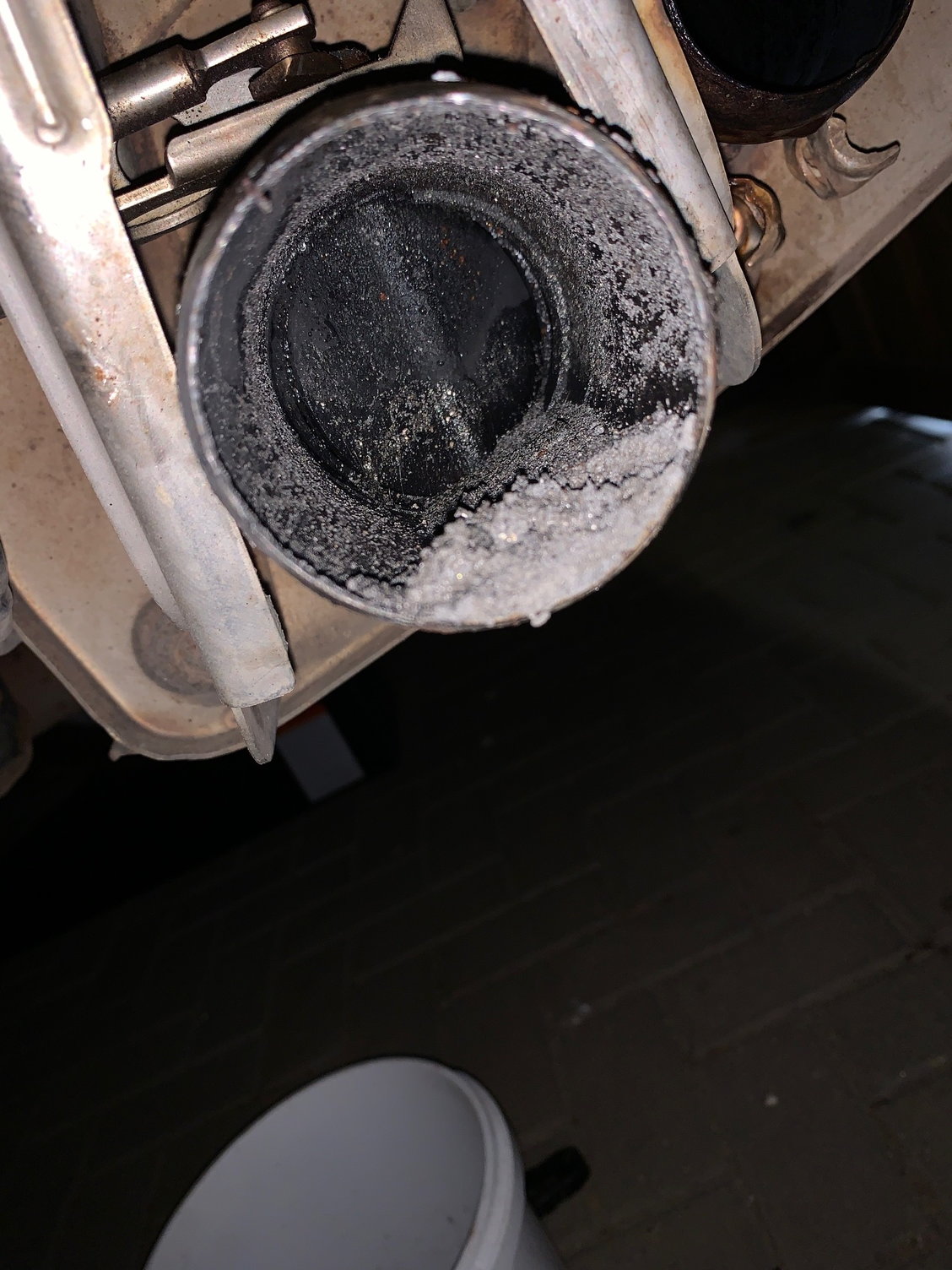error codes P0431 and P0421 Cayenne S
#16
It is very unlikely that both catalytic converters went bad at the same time.
My guess is you have a vacuum leak somewhere between the MAP and the cylinders. Check all the vacuum hoses, your AOS, and valve cover gaskets.
My guess is you have a vacuum leak somewhere between the MAP and the cylinders. Check all the vacuum hoses, your AOS, and valve cover gaskets.
#17
#18
wow, thank you for the update and sorry to hear. i just read the article that in 2019 the number one reason for “check engine light” was failing catalytic converter. I guess everyone is keeping their cars longer these days.
#20


#22
I called the previous owner, and he told me, that he has had missfire. In the engine was buildin 3 brands of coils, so the previous owner has had only replaced the coil, which was damaged. I replaced all together.
The following users liked this post:
Kjjones (03-20-2022)
#25
I've been getting a P0431 intermittently for some months and I'm hoping some folks in this thread may have some guidance. It started shortly after I went through a BIG puddle at a decent speed. It is not ambient temperature dependent - I occasionslly run at 10-15F with no code. Not burning oil, no misfires, no difference in power. Might be happening more often when car has been driven a bit then I stop for an errand. My Indy just started diagnosing and so far found no leaks in the exhaust. He asked me to drive it hard for a couple weeks to see if that clears a possible clog, but is leaning towards replacing the cat - in my ignorance I would rather check out sensors first. I, like others here, would like to find a cause and effect before throwing big $$$ at it. BTW, my gal is an 09 987.2 2.9l 6spd with 64K miles and I have never seen another code since I got her in September, and I reset this one asap after it appears.
#26
Hello all, I recently purchased a 2008 957 TT and the dreaded P0421 and P0431 popped up after driving about 500 miles. After experimenting with many things, it looks like my primary cats may indeed be the real cause. Since I don't want to spend $1k (after market) to $3k (Porsche) plus labor to replace both primary cats, I set out to experiment for a month with different resistors and caps from others that wrote on the topic on all car brands to attempt to suppress these error codes. I'm glad to report final success using a fairly simple solution. Drove for over 300 miles now with no P0421 and P0431 reported by OBD-II. While I do have a masters in EE, my passion lies in fixing annoying German (Audi, MB, Porsche, BMW) car problems with simple near $0 fixes for the past 10+ yrs.
Here it goes: While several have written the addition of a RC (time constant) circuit to the downstream O2 sensor signal line (Bosch black wire) to 'smooth' the downstream O2 reading , I concluded it is NOT necessary to use a resistor at all due to the varying resistance from the 02 sensor itself. Also, finding the correct RC combined values become a much more complex engineering challenge since the ECU (car computer) and O2 sensor resistance fluctuate depending on operating condition, such as throttle, engine/coolant temp, intake air temp, etc.
Taking a page from our car audio amp friends, I decided to use just a capacitor across the sensor signal and ground to 'stiffen' or delay the voltage drop (Bosch black and gray, respectively. Other brands may differ.) Based on sample measurements (engine running and not running) of the O2 sensor output and ECU resistance using a simple digital meter that resulted in 1-20 MOhms range, I concluded that the capacitance should be in microfarads (uF) to produce time constants in seconds (time constant = RxC). Remember we are dealingwith dynamic and not static operating conditions here, and I don't have an oscilloscope in my garage :-)
I started with 4.7 uF wired across (in parallel) the O2 signal and group wires on EACH of the two O2 sensors. Access is easy as the plugs are on top near the firewall with one each on the driver and passenger side under the plastic beauty covers. The downstream O2 has a BLACK sleeve, whereas the upstream has a BLUE sleeve. There are several ways to splice the cap in. I choose to use T-taps (no wire cutting) and wire nuts to allow the quick change of cap to different value. Final wiring will be soldered. Also, be mindful when using electrolytic (polarized) caps as the '+' side must go to signal wire and '-' goes to ground wire.
Outcome: The 4.7 uF cap was sufficient for the passenger cat to suppress the error code but not for the driver cat. I increased the cap value 10x each time (47 uF followed by 470 uF) on the driver side till no error. My final configuration is 4.7 uF on the passenger side and 470 uF on the driver side. Your values may/will be different depending on your primary cats' condition, but they should fall within single digit to triple digit cap values. While I happen to have these different caps in my hobby box, you can buy them easily at electronic hobby shops (microcenter) or online for a few $ but made sure they are temperature rated to 85C or higher to withstand the hood temp.
For those who are very environmentally conscious, the Cayenne has a pair of secondary cats to further clean the exhaust gas...and no animals, reptiles, or insects were harmed during this experiment.
Good luck to you all!
Here it goes: While several have written the addition of a RC (time constant) circuit to the downstream O2 sensor signal line (Bosch black wire) to 'smooth' the downstream O2 reading , I concluded it is NOT necessary to use a resistor at all due to the varying resistance from the 02 sensor itself. Also, finding the correct RC combined values become a much more complex engineering challenge since the ECU (car computer) and O2 sensor resistance fluctuate depending on operating condition, such as throttle, engine/coolant temp, intake air temp, etc.
Taking a page from our car audio amp friends, I decided to use just a capacitor across the sensor signal and ground to 'stiffen' or delay the voltage drop (Bosch black and gray, respectively. Other brands may differ.) Based on sample measurements (engine running and not running) of the O2 sensor output and ECU resistance using a simple digital meter that resulted in 1-20 MOhms range, I concluded that the capacitance should be in microfarads (uF) to produce time constants in seconds (time constant = RxC). Remember we are dealingwith dynamic and not static operating conditions here, and I don't have an oscilloscope in my garage :-)
I started with 4.7 uF wired across (in parallel) the O2 signal and group wires on EACH of the two O2 sensors. Access is easy as the plugs are on top near the firewall with one each on the driver and passenger side under the plastic beauty covers. The downstream O2 has a BLACK sleeve, whereas the upstream has a BLUE sleeve. There are several ways to splice the cap in. I choose to use T-taps (no wire cutting) and wire nuts to allow the quick change of cap to different value. Final wiring will be soldered. Also, be mindful when using electrolytic (polarized) caps as the '+' side must go to signal wire and '-' goes to ground wire.
Outcome: The 4.7 uF cap was sufficient for the passenger cat to suppress the error code but not for the driver cat. I increased the cap value 10x each time (47 uF followed by 470 uF) on the driver side till no error. My final configuration is 4.7 uF on the passenger side and 470 uF on the driver side. Your values may/will be different depending on your primary cats' condition, but they should fall within single digit to triple digit cap values. While I happen to have these different caps in my hobby box, you can buy them easily at electronic hobby shops (microcenter) or online for a few $ but made sure they are temperature rated to 85C or higher to withstand the hood temp.
For those who are very environmentally conscious, the Cayenne has a pair of secondary cats to further clean the exhaust gas...and no animals, reptiles, or insects were harmed during this experiment.
Good luck to you all!
#28
Will post pics soon…
BTW, I tried the silicon diode in series method from the Audi forum. While the diode prevented the cat efficiency code, other cat related codes popped up as reported by others who tried. Since the diode cuts off anything below 0.6V, the ECU thinks the O2 sensors failed. I concluded the ECU (car computer) algorithm is smart in preventing tempering. If the caps hadn’t worked, I was going to try germanium diodes which has a lower 0.3V threshold.
BTW, I tried the silicon diode in series method from the Audi forum. While the diode prevented the cat efficiency code, other cat related codes popped up as reported by others who tried. Since the diode cuts off anything below 0.6V, the ECU thinks the O2 sensors failed. I concluded the ECU (car computer) algorithm is smart in preventing tempering. If the caps hadn’t worked, I was going to try germanium diodes which has a lower 0.3V threshold.
#29
I've been getting a P0431 intermittently for some months and I'm hoping some folks in this thread may have some guidance. It started shortly after I went through a BIG puddle at a decent speed. It is not ambient temperature dependent - I occasionslly run at 10-15F with no code. Not burning oil, no misfires, no difference in power. Might be happening more often when car has been driven a bit then I stop for an errand. My Indy just started diagnosing and so far found no leaks in the exhaust. He asked me to drive it hard for a couple weeks to see if that clears a possible clog, but is leaning towards replacing the cat - in my ignorance I would rather check out sensors first. I, like others here, would like to find a cause and effect before throwing big $$$ at it. BTW, my gal is an 09 987.2 2.9l 6spd with 64K miles and I have never seen another code since I got her in September, and I reset this one asap after it appears.
#30
Will post pics soon…
BTW, I tried the silicon diode in series method from the Audi forum. While the diode prevented the cat efficiency code, other cat related codes popped up as reported by others who tried. Since the diode cuts off anything below 0.6V, the ECU thinks the O2 sensors failed. I concluded the ECU (car computer) algorithm is smart in preventing tempering. If the caps hadn’t worked, I was going to try germanium diodes which has a lower 0.3V threshold.
BTW, I tried the silicon diode in series method from the Audi forum. While the diode prevented the cat efficiency code, other cat related codes popped up as reported by others who tried. Since the diode cuts off anything below 0.6V, the ECU thinks the O2 sensors failed. I concluded the ECU (car computer) algorithm is smart in preventing tempering. If the caps hadn’t worked, I was going to try germanium diodes which has a lower 0.3V threshold.




